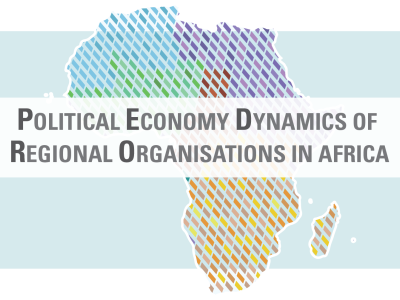
Talking about the impact of private sector for development, are we using the same language?
What's on this page
A whole new range of actors is placing private sector development centre of their attention and operations. While a wider set of players can provide significant strength and dynamic to any activity, it also brings confusion and incoherence. A useful first step would be to get a better common understanding of the actual impacts of private development activities, to define different measurement tools, and to reflect on their implications for policy. ECDPM with TraidCraft, DCED and BUSINESSEUROPE organised an informal multi-stakeholder meeting in Brussels in last December to highlight and share the different views of the opportunities and challenges, as well as potential ways forward, in measuring impact of private sector development. Participants included, inter alia, EU officials, research institutes, development agencies, ACP and EU ambassadors, civil society organisations and private sector actors and confederations. This wide range of stakeholders enabled a cross-sectoral dialogue in which the common and diverging interests of engaging and measuring private sector development could be further discussed and defined. Several of them underlined the need for a common language between different stakeholders when debating impacts of private sector development. However, as a first step we should ask whether stakeholders are actually referring to the same things when they are discussing pro-developmental private sector activities. Business representatives present at the meeting frequently put the emphasis on their “side projects” devoted to developmental objectives, rather than on their core commercial activities. There still seems to be some reluctance to acknowledge that all activities can have developmental impacts and that all activities therefore are relevant in these discussions, in particular the main operations. By choosing to not address this, private sector actors are avoiding the fact that their main business activities most likely are their main development impact. Despite the private sector’s often-cited move beyond corporate social responsibility, the focus for some still seems to be predominantly placed within the (often marginal) add-on projects on the side of the core business. Measuring the impact of a smaller sized side activity is surely less relevant than measuring the impact of the entire business operation within a country, including the effect on the labour market, environment, value chain integration, credit access, lobbying activities, regulatory standards etc. Ultimately, if we don’t agree on what we want to measure, then it is less relevant to discuss how we want to measure it. Another topic, somewhat related to the “what” and “how” questions, is asking “what for?”. Speaking about objectives of the measurement practices, some participants, predominantly from the civil society, emphasised the need to ensure that poverty reduction truly remains central in all operations funded by public money and that this factor is the key impact to measure. Others actors pointed to the need not to make great the enemy of good. Even if some projects only have limited impact on development in terms of poverty, it is still important for the public sector to ensure a strong and lasting engagement with the private sector, and the measurements tools should therefore include a wider set of indicators. This choice of measurement tool depends not only on the objectives of the exercise. Keeping the balance between cost and time investments and analytical depth also matters. Measurement practices can be expensive and time consuming, and at ECDPM’s multi-stakeholder meeting, some participants voiced criticism that certain stakeholders only measure the short-term effects and therefore overlook the longer-term consequences (both positive and negative). In defense it was argued that given the constrained capacity, expertise and resources that often limit the possible measurement activities, it is still preferable to measure some impacts rather than none at all. Especially so if these findings later can contribute to building a knowledge and experience base for future impact measurements. As the workshop heard, guidelines such as the DCED standard can suggest a way forward. This provides a valuable framework for thinking through how donor interventions link to impacts and outputs. However, it was also expressed that their quite general approach and limited level of details in terms of how to measure certain aspects of the results chain may imply less value as a concrete toolbox for donors and others in need of more concrete guidance. Looking at the challenges presented above, the partnership model that is increasingly promoted might provide some combined interests that can further push the agenda. As partnerships between public-private and/or civil society actors, they can increase the possibility that the measurement is (i) in the interest of all the partners and therefore better finds the necessary balance, and (ii) not only captures corporate social responsibility-type activities, but also core business impacts. This leads back to the original point of the need for actors to improve communication and work closer together in which these partnerships seems to be a fruitful way forward, also in terms of impact measurements. -- Anna Rosengren is Policy Officer in the Economic Transformation Programme at ECDPM. This blog post features the author’s personal views and does not represent the view of ECDPM.
Loading Conversation



